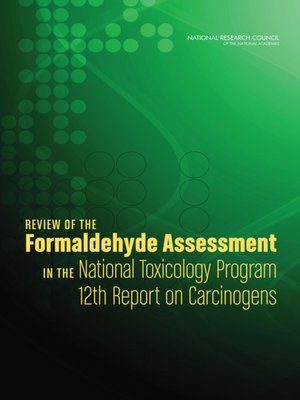Review of the Formaldehyde Assessment in the National Toxicology Program 12th Report on Carcinogens
ebook
By National Research Council

Sign up to save your library
With an OverDrive account, you can save your favorite libraries for at-a-glance information about availability. Find out more about OverDrive accounts.
Find this title in Libby, the library reading app by OverDrive.



Search for a digital library with this title
Title found at these libraries:
| Loading... |
<p>Many people in the United States are exposed to formaldehyde. Exposure can occur from environmental sources (for example, combustion processes, building materials, and tobacco smoke) or in occupational settings (for example, the furniture, textile, and construction industries). Formaldehyde exposure also has endogenous sources—it is produced intracellularly as a component of the one carbon pool intermediary metabolism pathway. Scientists have studied formaldehyde for decades to determine whether exogenous formaldehyde exposure may be associated with cancer in humans. In 1981, The National Toxicology Program (NTP) first listed formaldehyde in the 2nd Report on Carcinogens as "reasonably anticipated to be a human carcinogen". In 2011, NTP upgraded the listing of formaldehyde to "known to be a human carcinogen". Following the new listing, Congress directed the Department of Health and Human Services to arrange for the National Academy of Sciences to independently review formaldehyde's substance profile and listing. This report presents the findings and conclusions of the committee formed in response to the congressional request.</p>
<p><i>Review of the Formaldehyde Assessment in the National Toxicology Program 12th Report on Carcinogens</i> concurs with NTP that there is sufficient evidence in studies that had adequate characterization of relevant exposure metrics to enable a strong conclusion about the association between formaldehyde exposure and cancer in humans. Additionally, the authoring committee independently reviewed the scientific evidence from studies in humans, experimental animals, and other studies relevant to the mechanisms of carcinogenesis and made level-of-evidence conclusions. This report finds clear and convincing epidemiologic evidence of an association between formaldehyde exposure and nasopharyngeal and sinonasal cancers in humans.</p>






